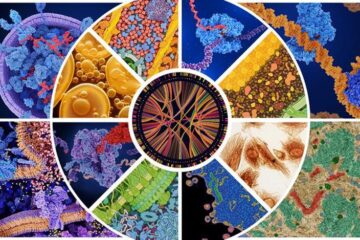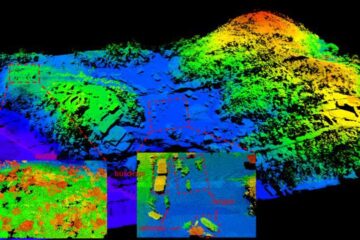P[acman]-generated fruit fly gene 'library': A new research tool

In a report in the current online issue of the journal Nature Methods, Dr. Hugo Bellen (http://flypush.imgen.bcm.tmc.edu/lab/), a professor of molecular and human genetics at BCM and a Howard Hughes Medical Institute investigator, and his colleagues describe the new libraries.
P[acman]– developed by Dr. Koen Venken (http://flypush.imgen.bcm.tmc.edu/lab/koenv/index.html) in Bellen's laboratory– allows scientists to study large chunks of DNA in living flies. The vector – officially P/phiC31 artificial chromosome for manipulation – combines different technologies: a specially designed bacterial artificial chromosome (BAC) that allows maintenance of large pieces of DNA in bacteria, recombineering that allows the manipulation of large pieces of DNA in bacteria, and the ability to insert the genomic DNA into the genome of the fly at a specific site using phiC31-mediated transgenesis.
Venken adapted the P[acman] vector to create genomic libraries, so that a researcher can choose a gene and find the corresponding clones in the library that cover that gene. Their collaborators at Lawrence Berkeley National Laboratory, Drs. Roger Hoskins and Joseph Carlson, played a key role in the design, construction, and annotation of the libraries.
“You can insert a single copy of a gene and rescue a mutation, or do a structure/function analysis of the gene,” Bellen said. “If you don't know where the gene is expressed, you can tag it, put it back and locate where it is expressed.”
The library is available at http://pacmanfly.org/.
Others who took part in this work include Karen L. Schulze, Hongling Pan and Yuchun He of BCM, Ken Wan (LBNL), Rebecca Spokony and Kevin P. White of the University of Chicago, and Maxim Koriabine and Pieter J. de Jong of Children's Hospital Oakland Research Institute in California.
Funding for this work came from the Howard Hughes Medical Institute, the National Institutes of Health and the BCM Intellectual and Developmental Disabilities Research Center.
When the embargo lifts, the report will be available at http://www.nature.com/nmeth/index.html
For more information on basic science research at Baylor College of Medicine, please go to www.bcm.edu/fromthelab.
Media Contact
All latest news from the category: Life Sciences and Chemistry
Articles and reports from the Life Sciences and chemistry area deal with applied and basic research into modern biology, chemistry and human medicine.
Valuable information can be found on a range of life sciences fields including bacteriology, biochemistry, bionics, bioinformatics, biophysics, biotechnology, genetics, geobotany, human biology, marine biology, microbiology, molecular biology, cellular biology, zoology, bioinorganic chemistry, microchemistry and environmental chemistry.
Newest articles

A universal framework for spatial biology
SpatialData is a freely accessible tool to unify and integrate data from different omics technologies accounting for spatial information, which can provide holistic insights into health and disease. Biological processes…

How complex biological processes arise
A $20 million grant from the U.S. National Science Foundation (NSF) will support the establishment and operation of the National Synthesis Center for Emergence in the Molecular and Cellular Sciences (NCEMS) at…

Airborne single-photon lidar system achieves high-resolution 3D imaging
Compact, low-power system opens doors for photon-efficient drone and satellite-based environmental monitoring and mapping. Researchers have developed a compact and lightweight single-photon airborne lidar system that can acquire high-resolution 3D…





















